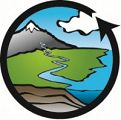2016 CUAHSI Biennial Symposium
-
IML, INVESTIGATOR
-
Christina, INVESTIGATOR
-
Shale Hills, STAFF
2016 CUAHSI Biennial Symposium
The spatial and temporal resolution of environmental observations is increasing rapidly with advances in remote sensing, wireless in-situ sensor development, and environmental observatories. Big data, which is increasingly available to the hydrology community, has the potential to transform our approaches to address environmental problems. How can we use big data to improve understanding of complex interactions and feedbacks from local to global scales that are critical to understand past and predict future response of the hydrosphere to changes in climate and human activities? The theme of the 2016 CUAHSI Biennial meeting focuses on enabling the use of big data within the hydrologic sciences toward integrated understanding of complex processes, sustainability of water resources, and assessment of change across the global hydrosphere.
Featured Speakers Include:
- Dara Entekhabi, MIT (Eagleson lecture)
- Praveen Kumar, UIUC (Wolman lecture)
- Lucy Nowell, DoE (Keynote lecture)
Registration is now open! Register by Wednesday, June 8 for early bird registration rates! - See more at: https://www.cuahsi.org/Posts/Entry/26871#sthash.nD8pi8mm.dpuf
Call for Abstracts: Poster Session
- Deadline is May 31, 2016
- For more information, please visit: http://bit.ly/1S1Q1oH
Discipline Tags, CZOs, and Links
Data Management / CyberInfrastructure
Hydrology
Modeling / Computational Science
National
Explore Further




